Abstract
This article reports on the findings of a study of the effects of the hospice program on Medicare Part A expenditures during the first three years of the program. The analysis compared treatment costs between hospice beneficiaries and nonbenefit patients with diagnosis of malignant cancer during their last seven months of life. It was estimated that during the first three years of the hospice program, Medicare saved $1.26 for every dollar spent on Part A expenditures. While the methodology included use of data from Medicare claims to adjust for confounding factors, including self-selection bias, our estimated savings might still have been overstated due to persistent selection effects. The extent of savings also varied according to the hospice's organization. Freestanding hospices, in contrast to those affiliated with either a hospital, nursing home, or home health agency, achieved the greatest savings by utilizing home care more extensively. However, we note that payment rates are increasing and the limits on the benefit period are being lifted, making it possible that the savings related to the hospice program found in this study will not continue. Of greater importance may be the long-term access and quality effects engendered by the benefit's preference for home care.
Full text
PDF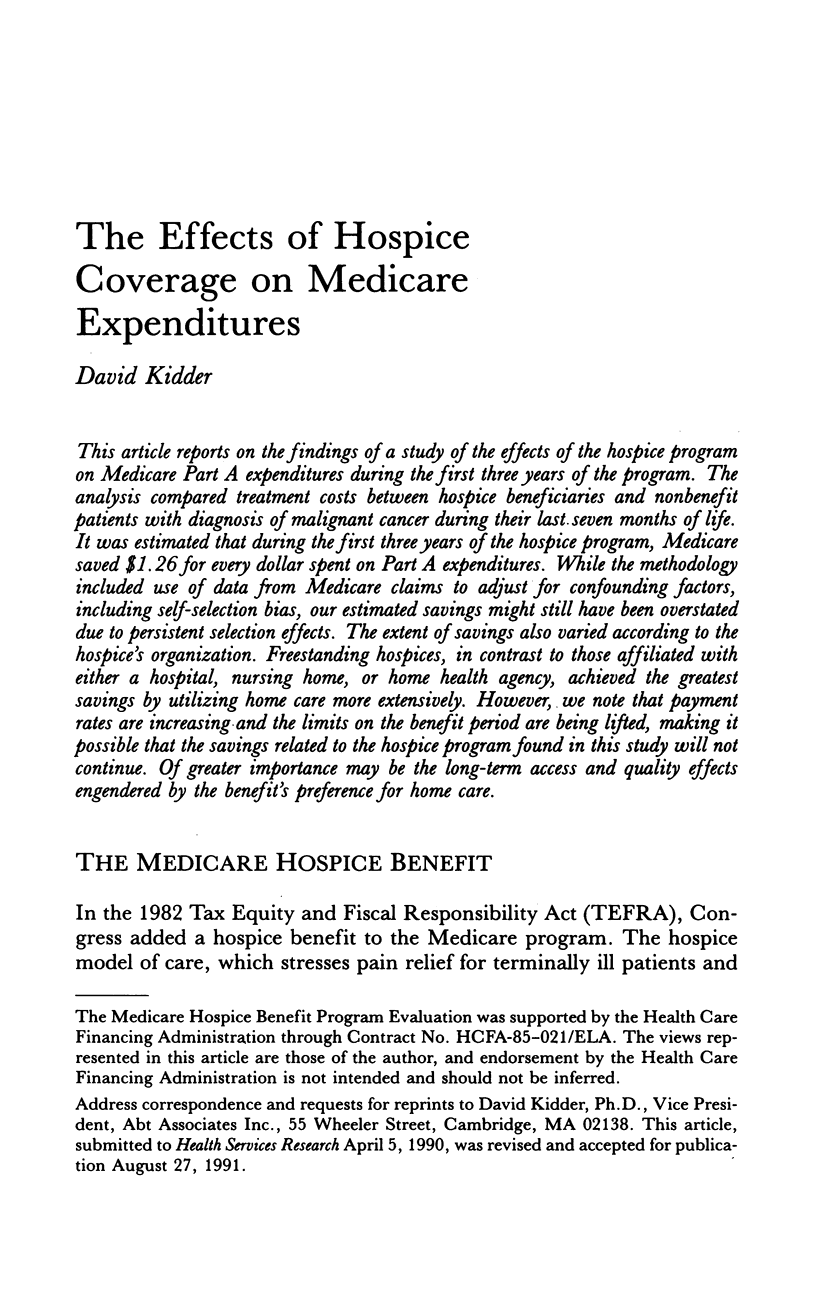
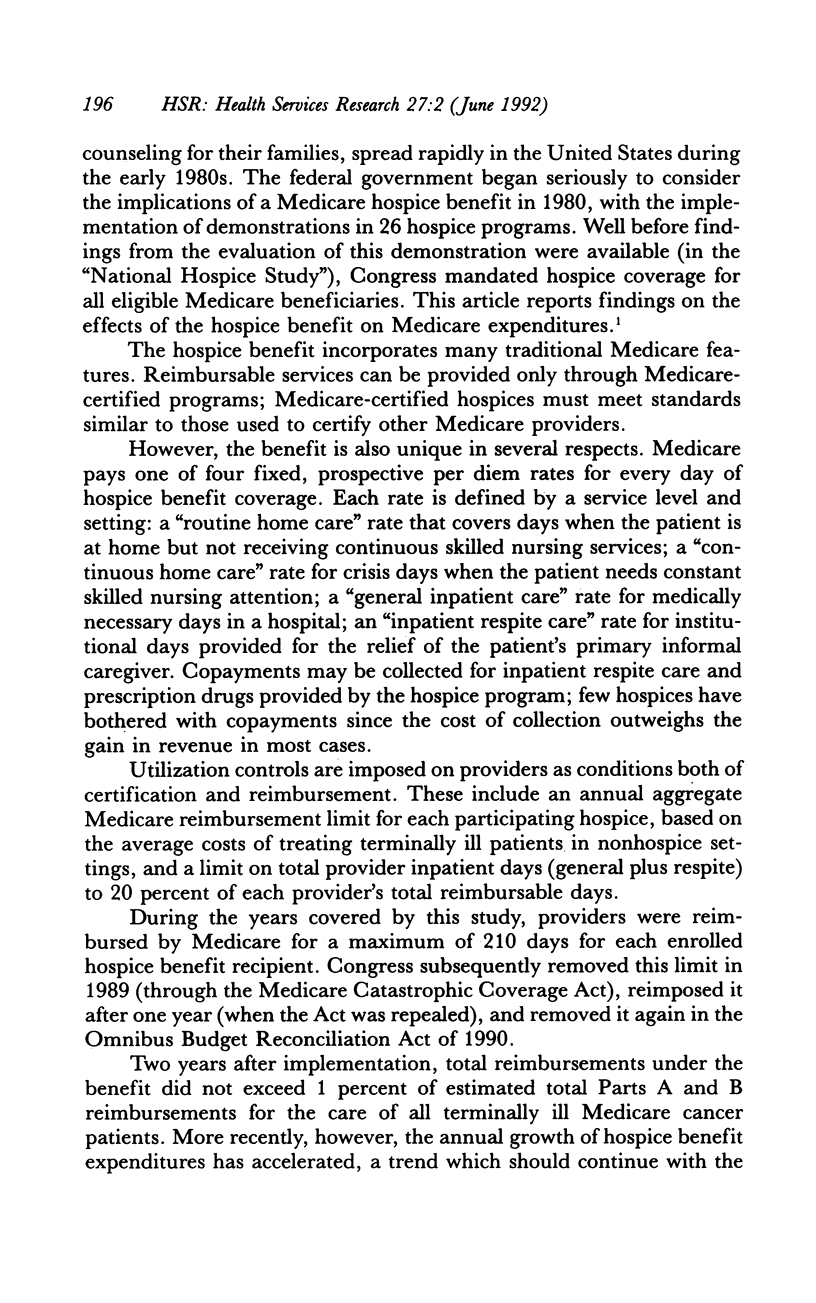

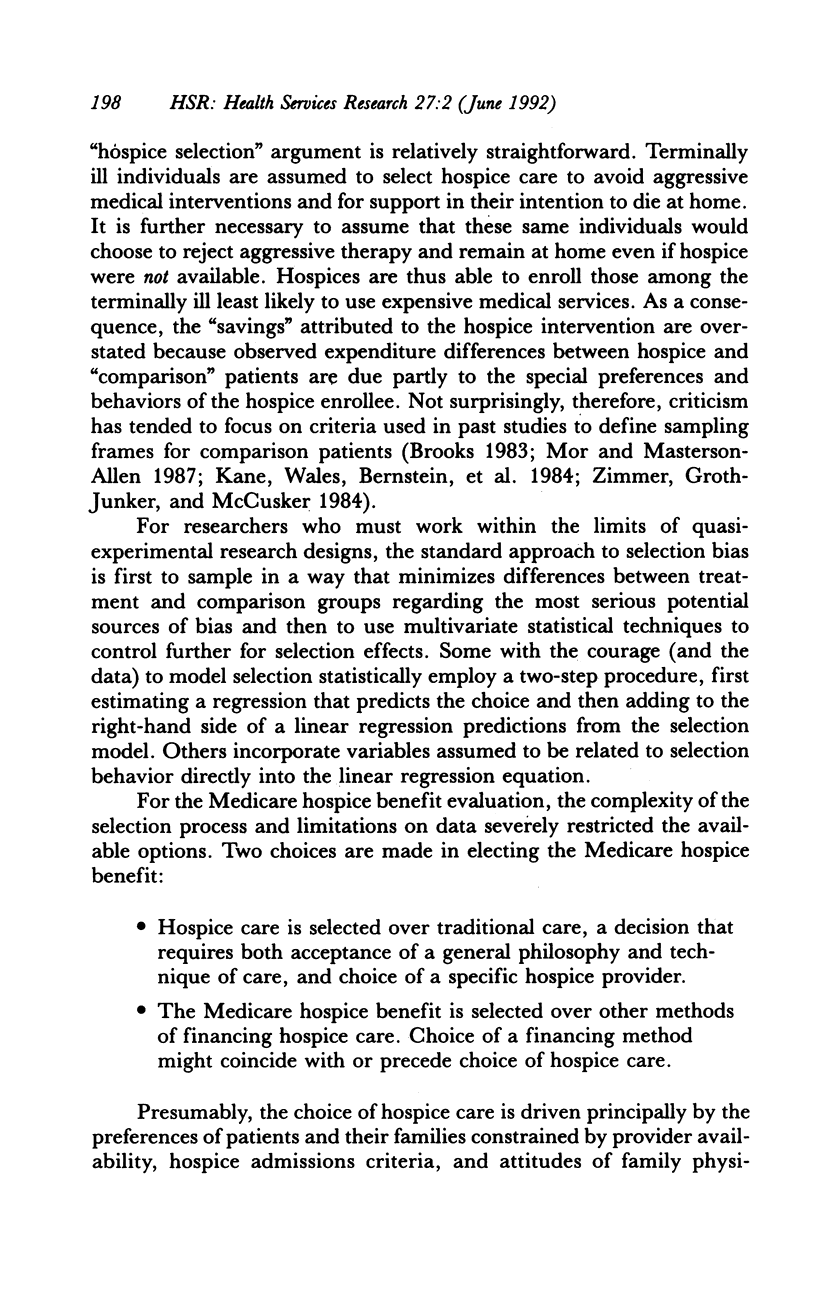

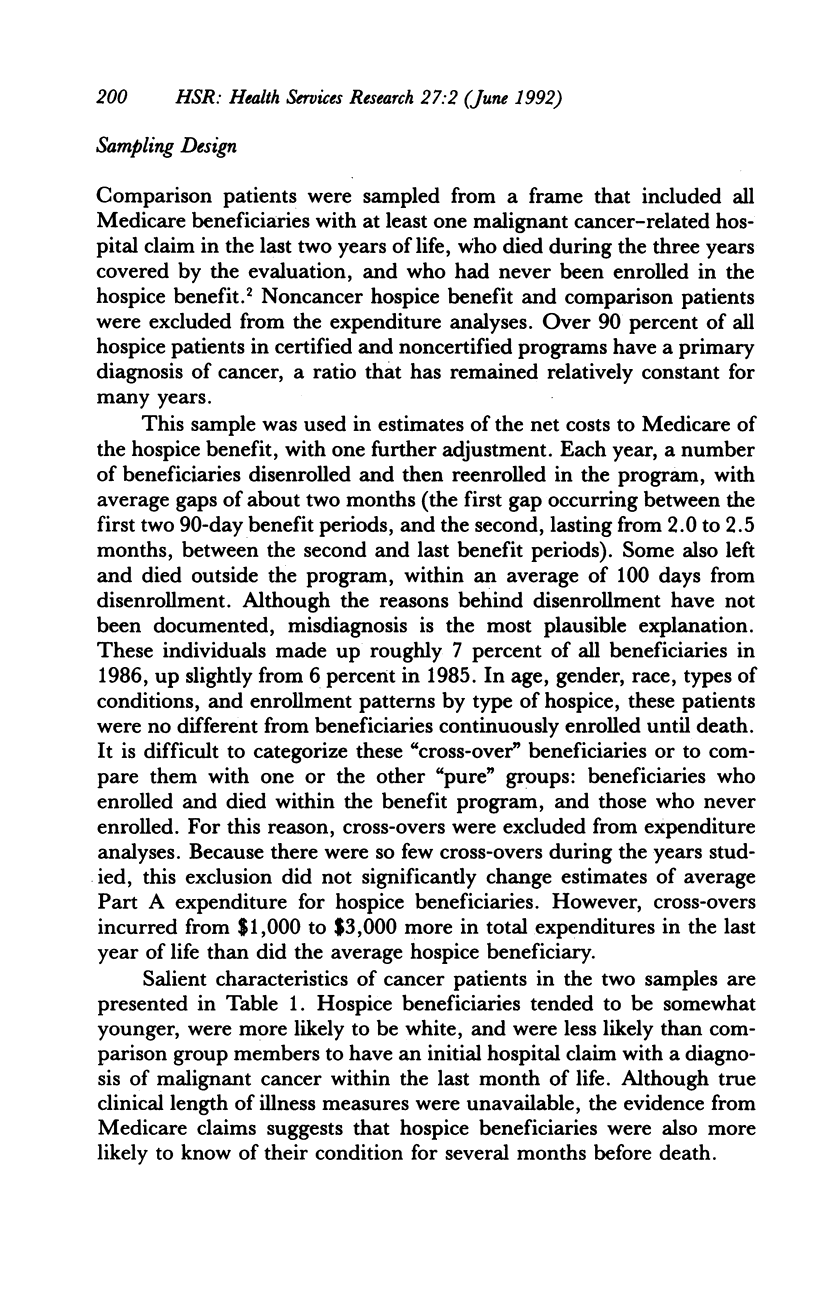



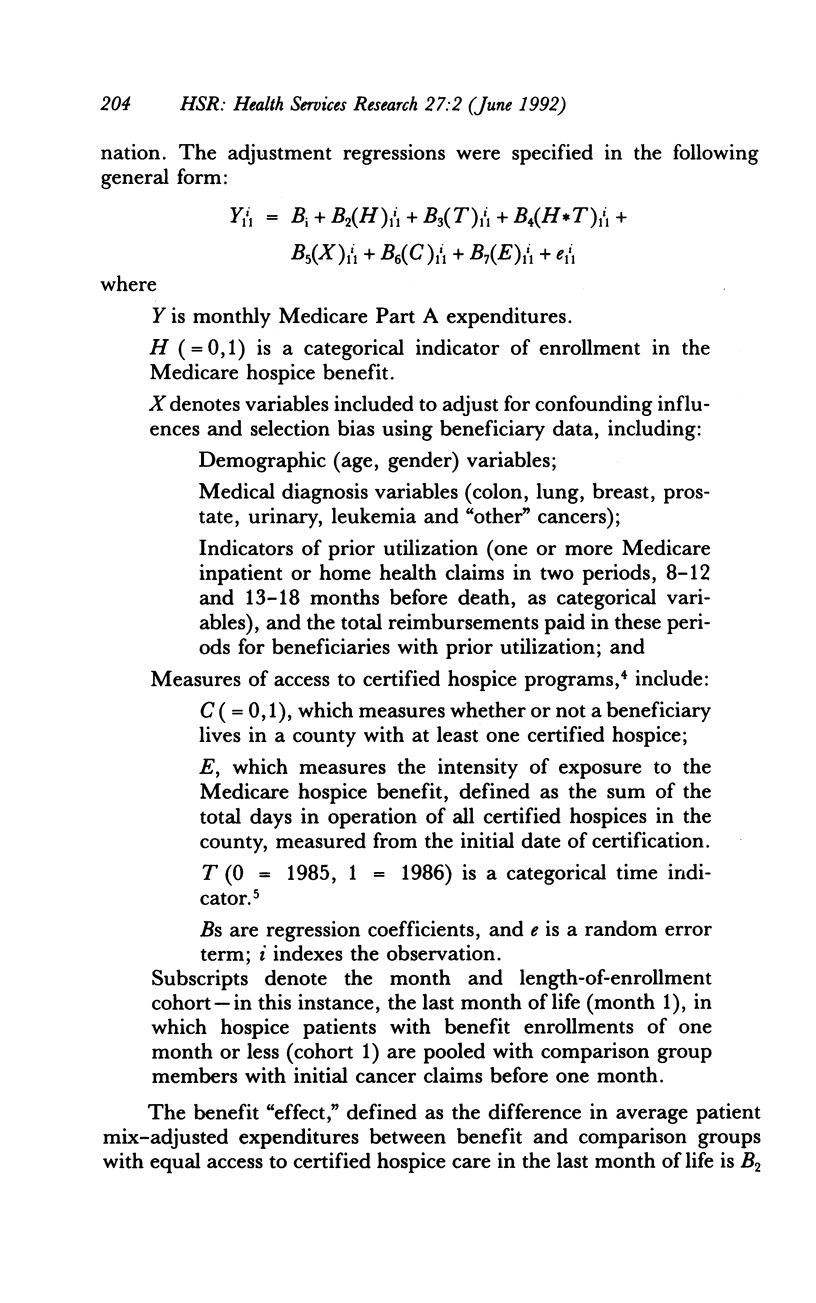

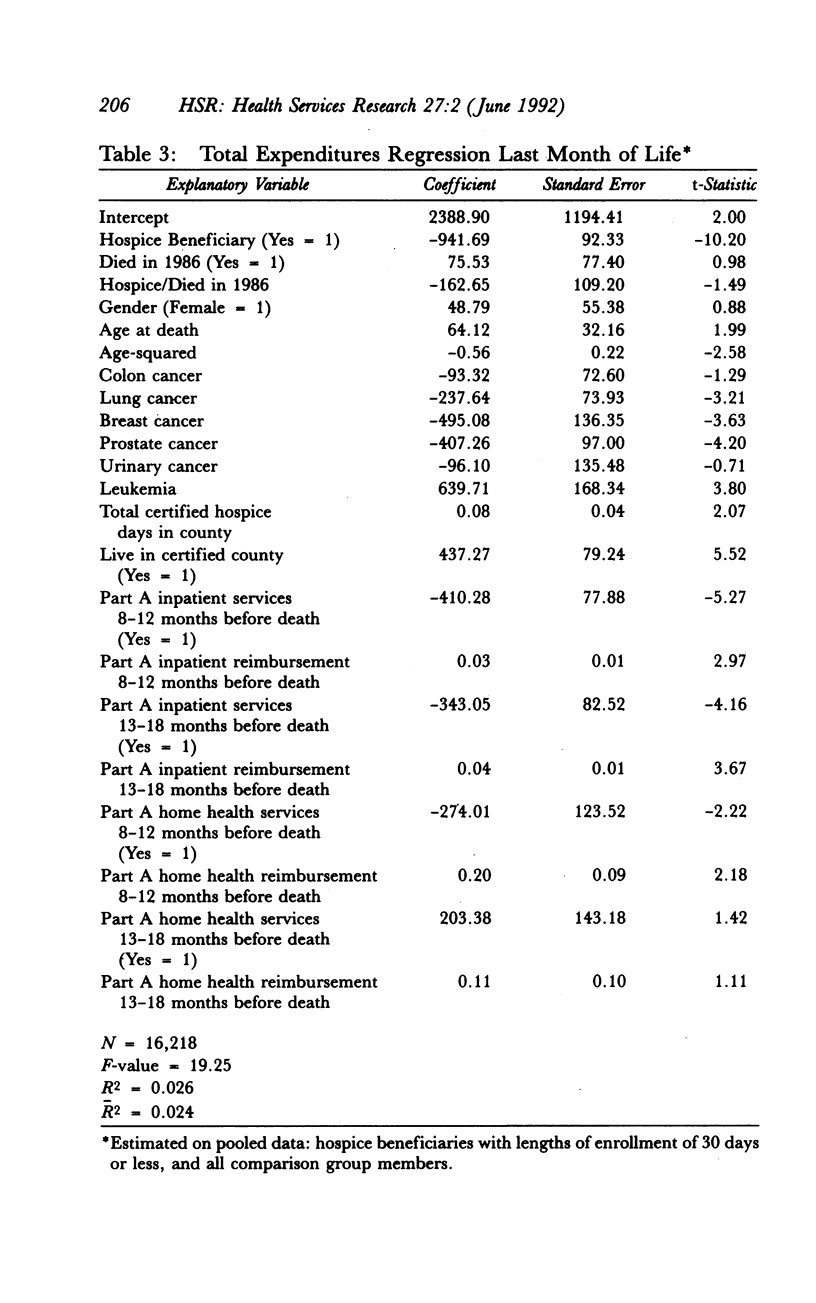
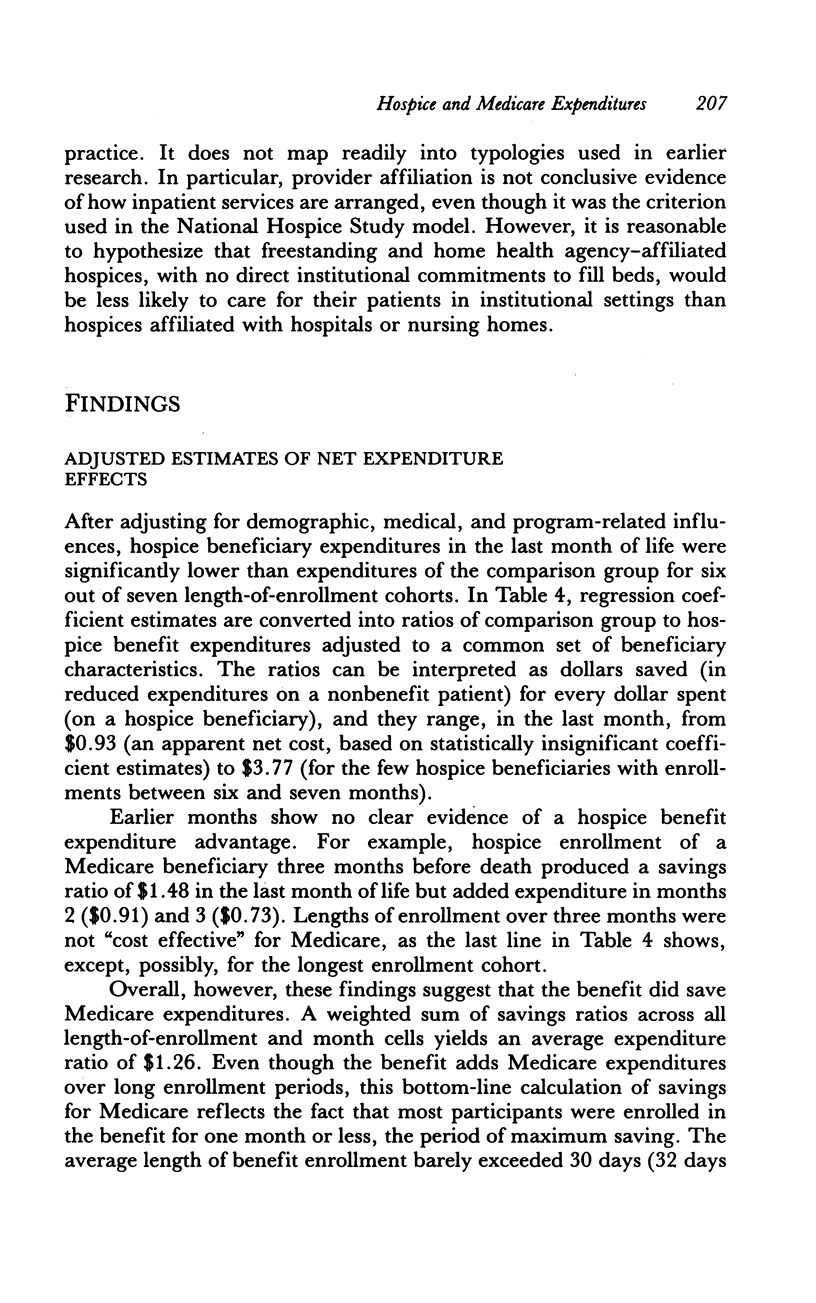
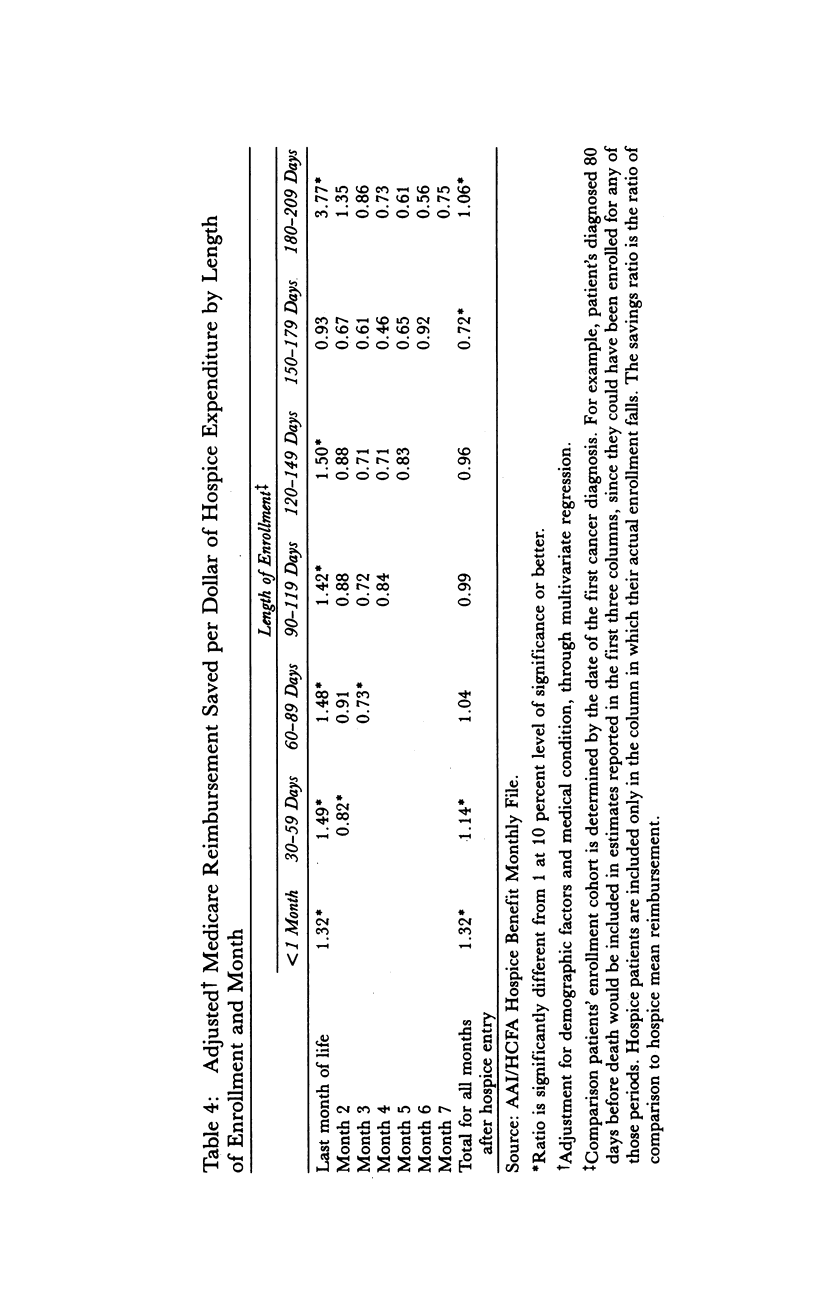

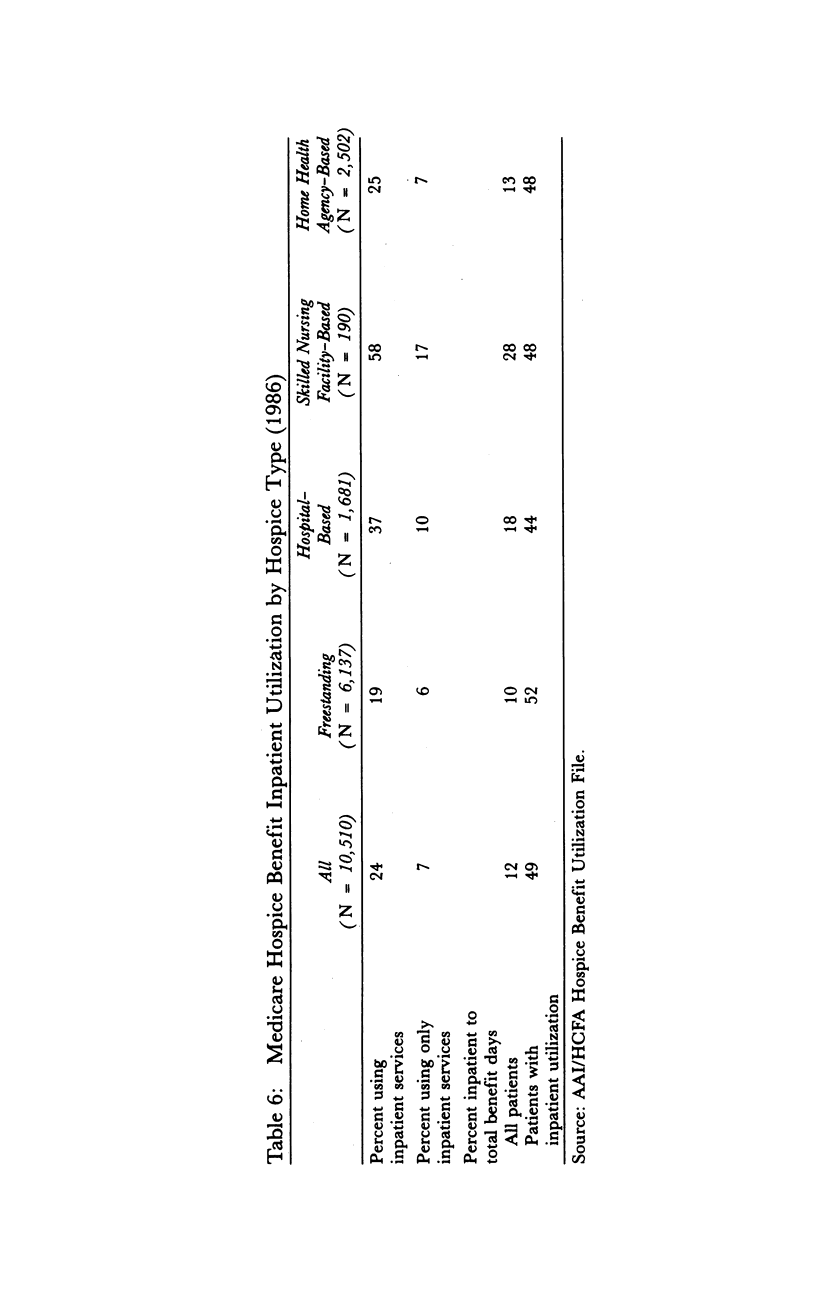
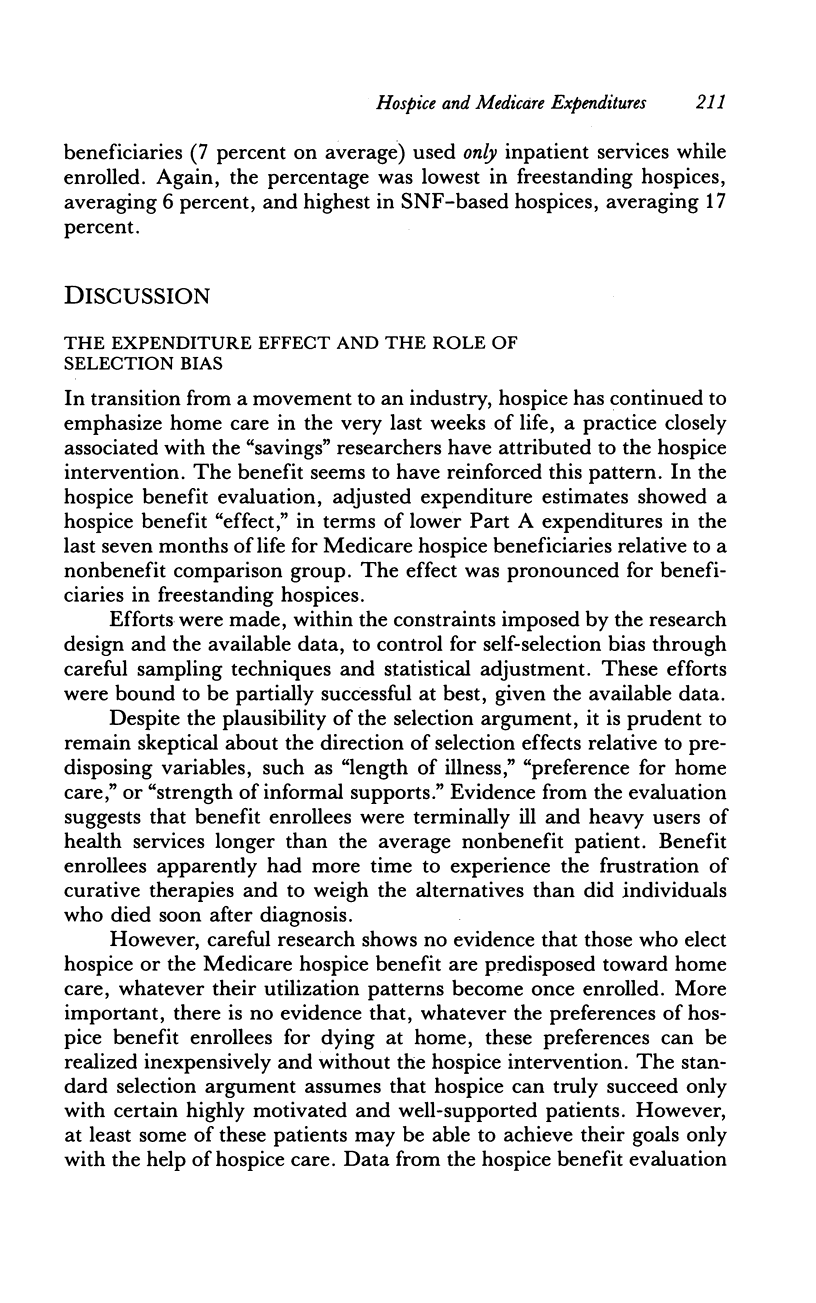
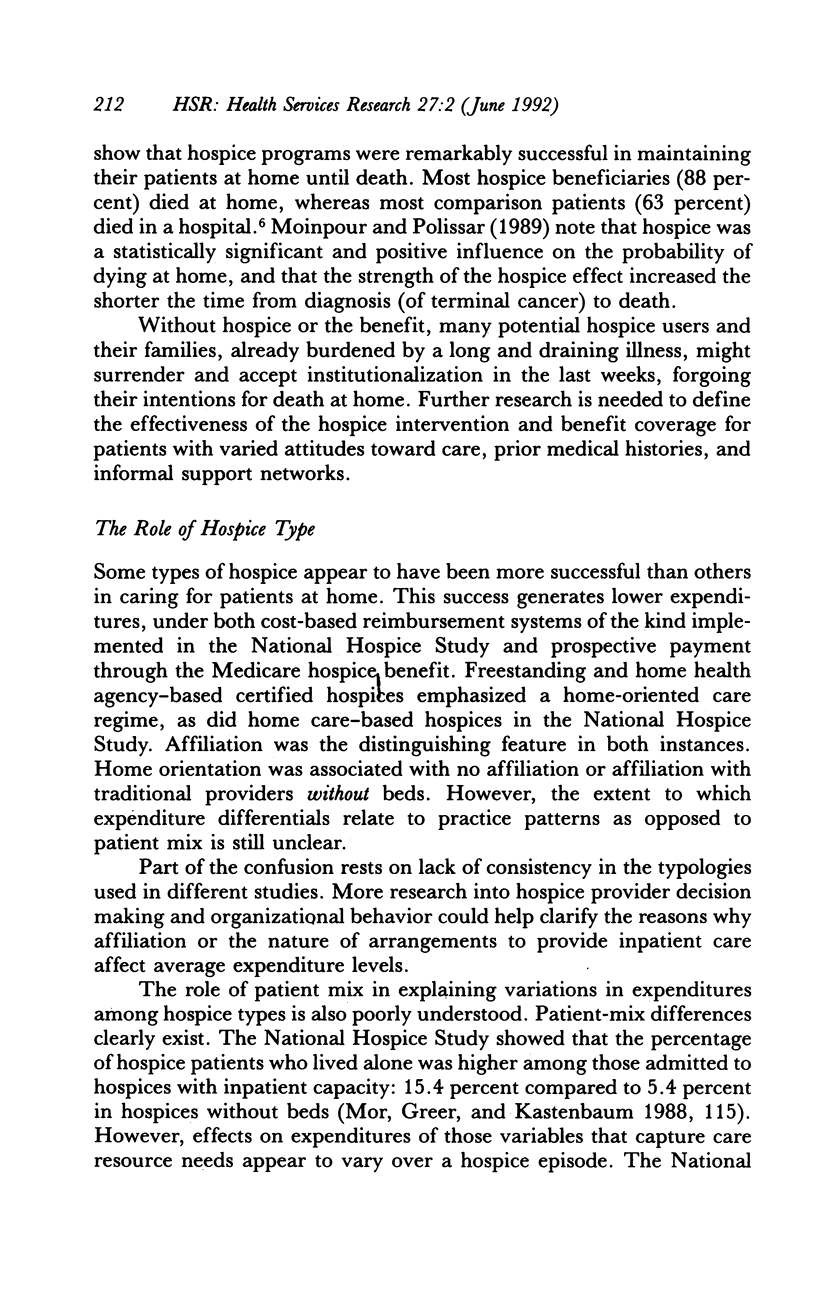
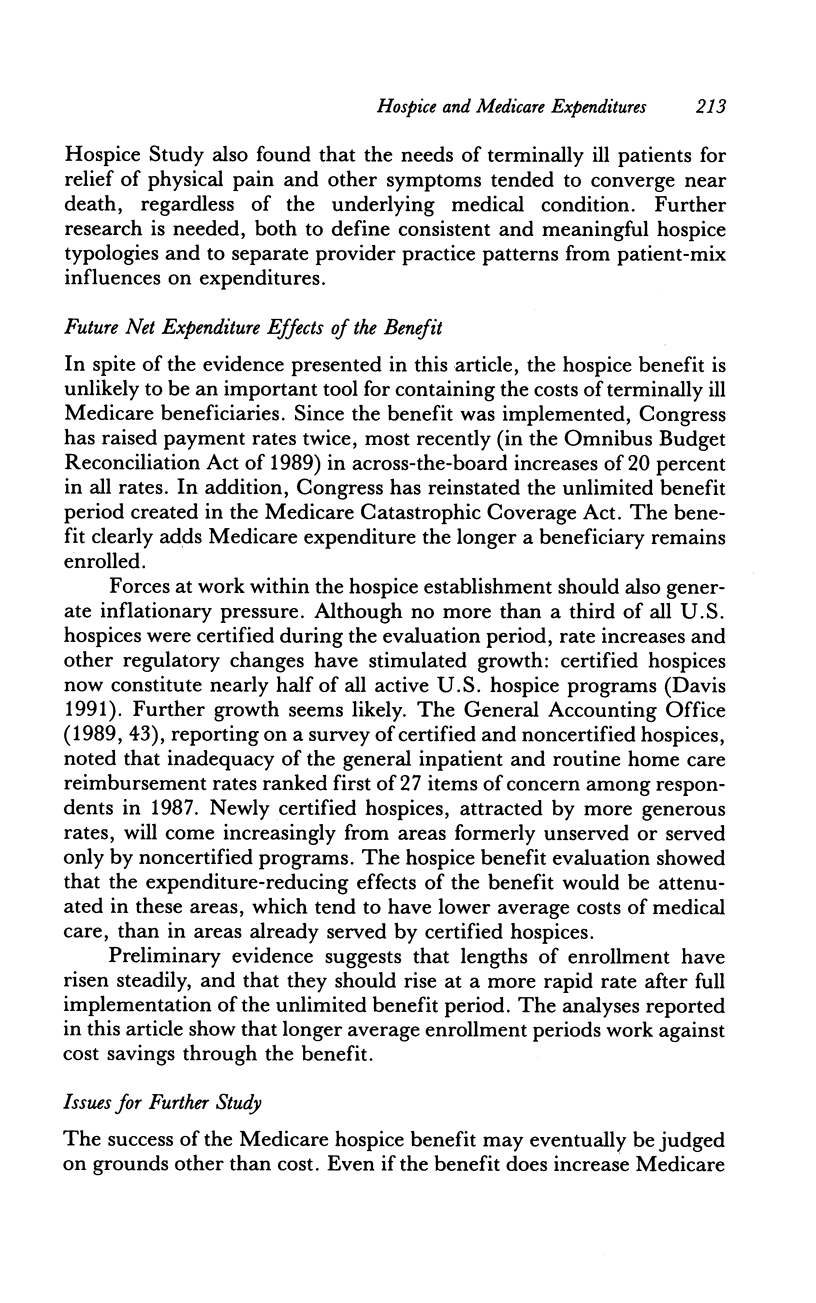
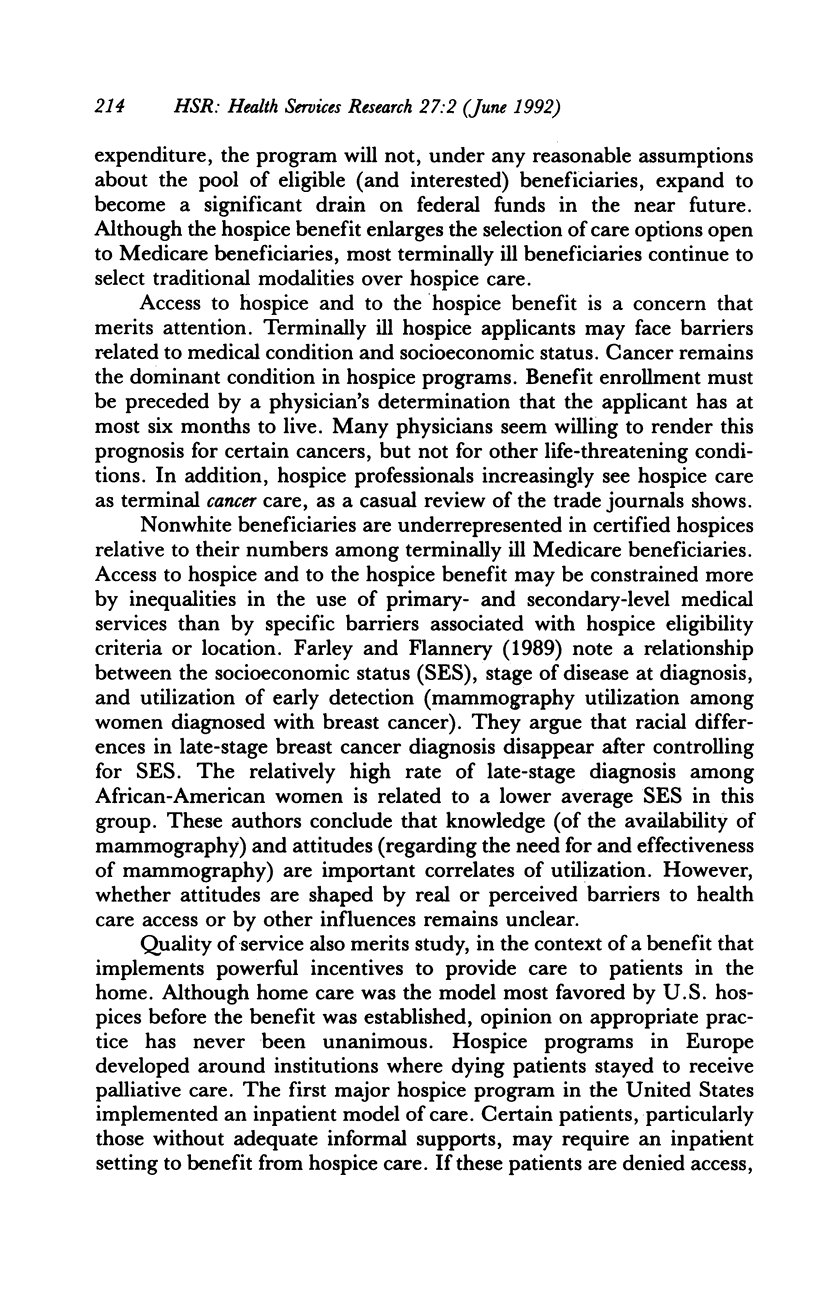
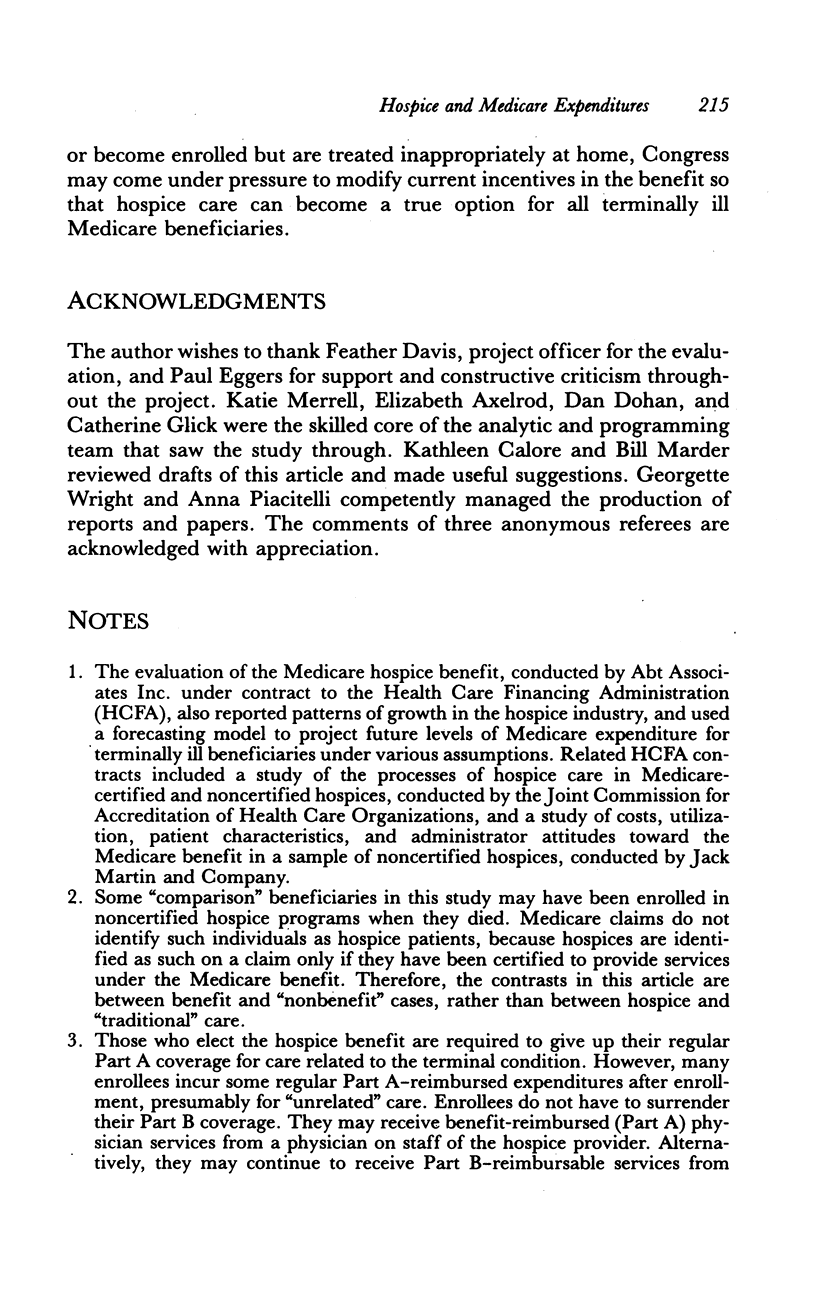
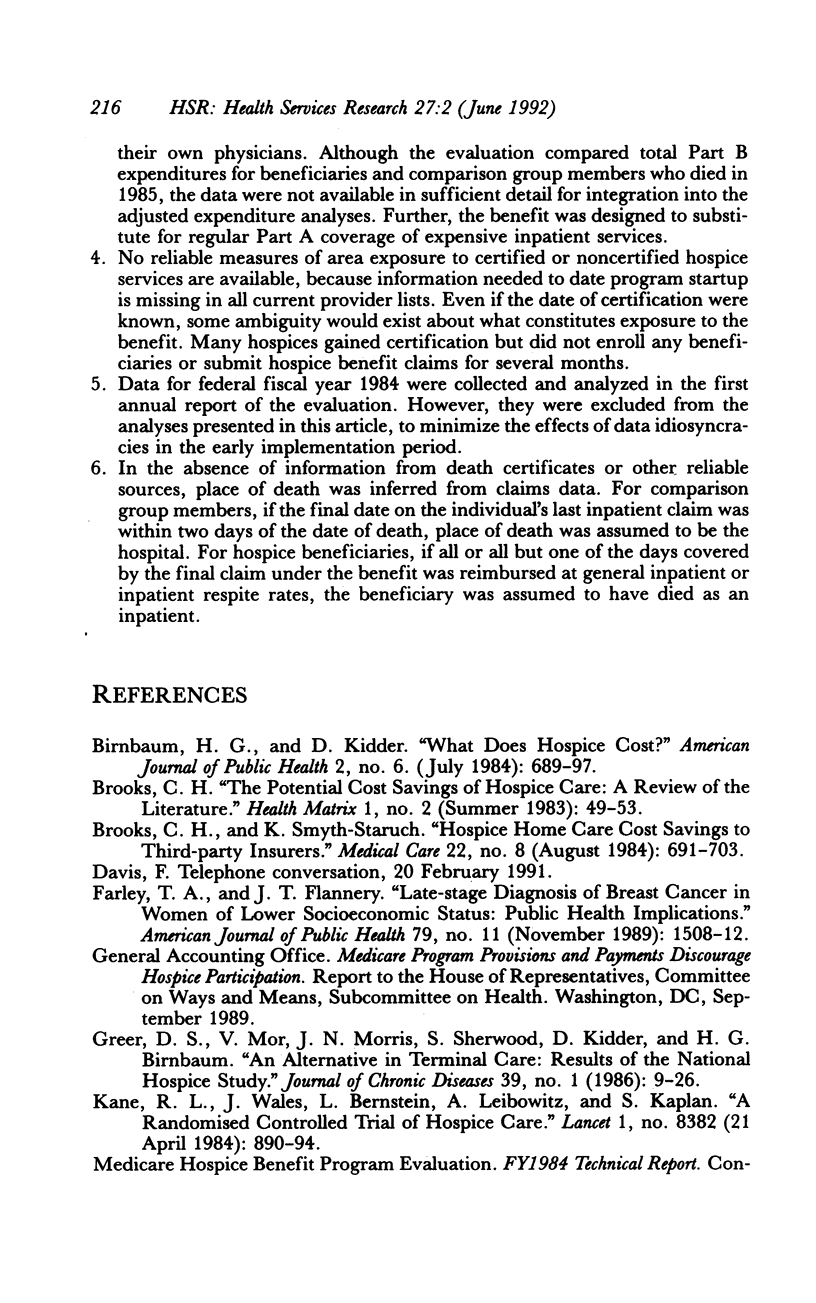
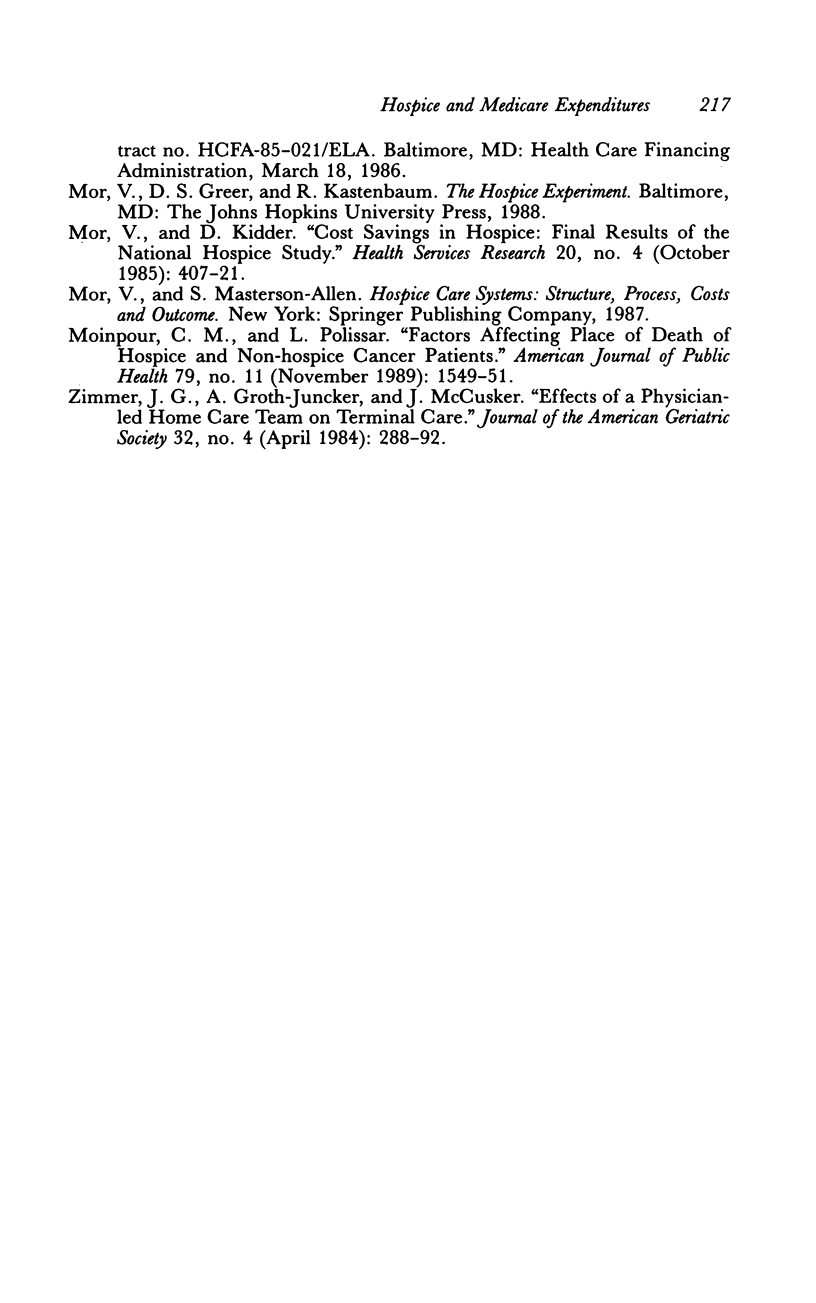
Selected References
These references are in PubMed. This may not be the complete list of references from this article.
- Birnbaum H. G., Kidder D. What does hospice cost? Am J Public Health. 1984 Jul;74(7):689–697. doi: 10.2105/ajph.74.7.689. [DOI] [PMC free article] [PubMed] [Google Scholar]
- Brooks C. H., Smyth-Staruch K. Hospice home care cost savings to third-party insurers. Med Care. 1984 Aug;22(8):691–703. doi: 10.1097/00005650-198408000-00002. [DOI] [PubMed] [Google Scholar]
- Brooks C. H. The potential cost savings of hospice care: a review of the literature. Health Matrix. 1983 Summer;1(2):49–53. [PubMed] [Google Scholar]
- Farley T. A., Flannery J. T. Late-stage diagnosis of breast cancer in women of lower socioeconomic status: public health implications. Am J Public Health. 1989 Nov;79(11):1508–1512. doi: 10.2105/ajph.79.11.1508. [DOI] [PMC free article] [PubMed] [Google Scholar]
- Greer D. S., Mor V., Morris J. N., Sherwood S., Kidder D., Birnbaum H. An alternative in terminal care: results of the National Hospice Study. J Chronic Dis. 1986;39(1):9–26. doi: 10.1016/0021-9681(86)90103-7. [DOI] [PubMed] [Google Scholar]
- Kane R. L., Wales J., Bernstein L., Leibowitz A., Kaplan S. A randomised controlled trial of hospice care. Lancet. 1984 Apr 21;1(8382):890–894. doi: 10.1016/s0140-6736(84)91349-7. [DOI] [PubMed] [Google Scholar]
- Moinpour C. M., Polissar L. Factors affecting place of death of hospice and non-hospice cancer patients. Am J Public Health. 1989 Nov;79(11):1549–1551. doi: 10.2105/ajph.79.11.1549. [DOI] [PMC free article] [PubMed] [Google Scholar]
- Mor V., Kidder D. Cost savings in hospice: final results of the National Hospice Study. Health Serv Res. 1985 Oct;20(4):407–422. [PMC free article] [PubMed] [Google Scholar]
- Zimmer J. G., Groth-Juncker A., McCusker J. Effects of a physician-led home care team on terminal care. J Am Geriatr Soc. 1984 Apr;32(4):288–292. doi: 10.1111/j.1532-5415.1984.tb02023.x. [DOI] [PubMed] [Google Scholar]


